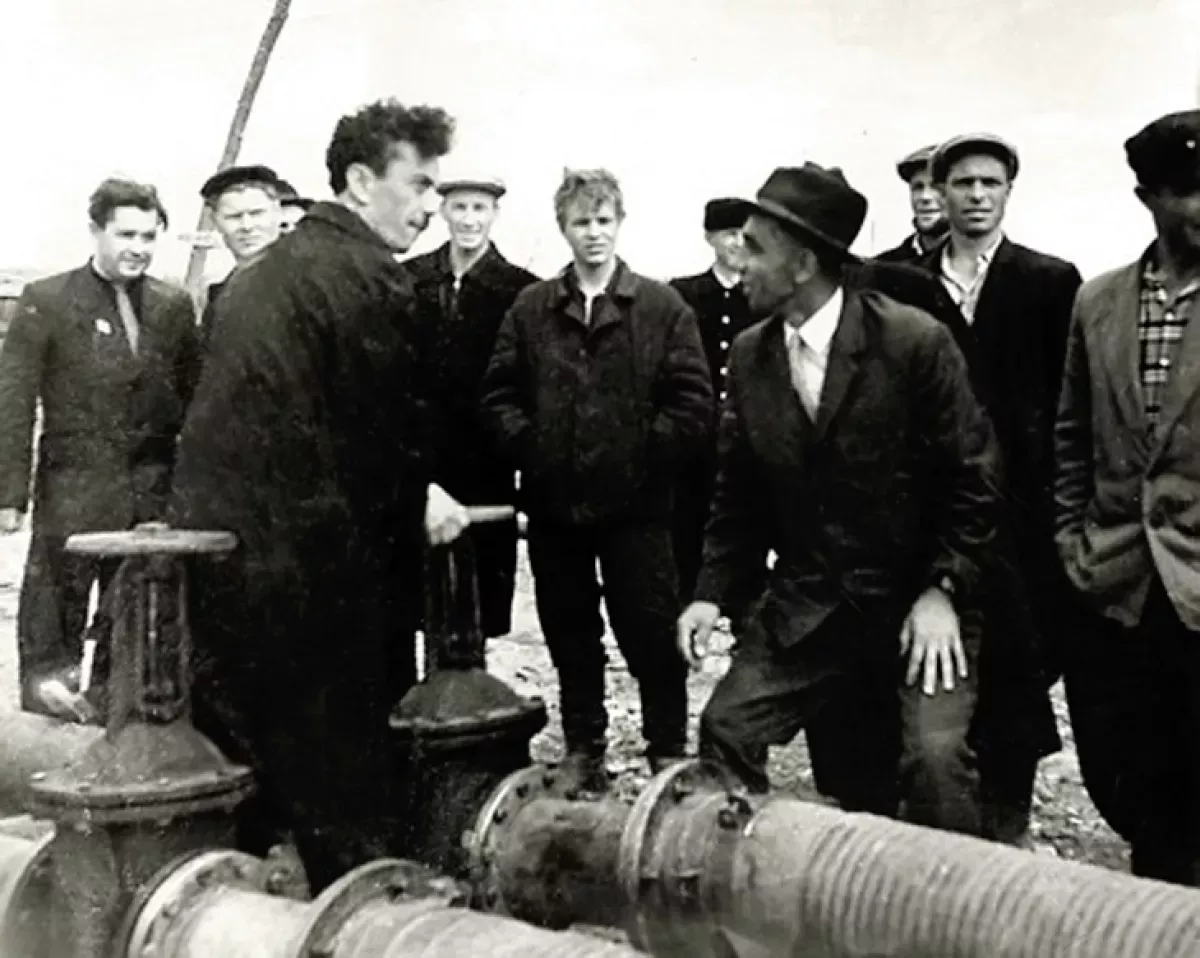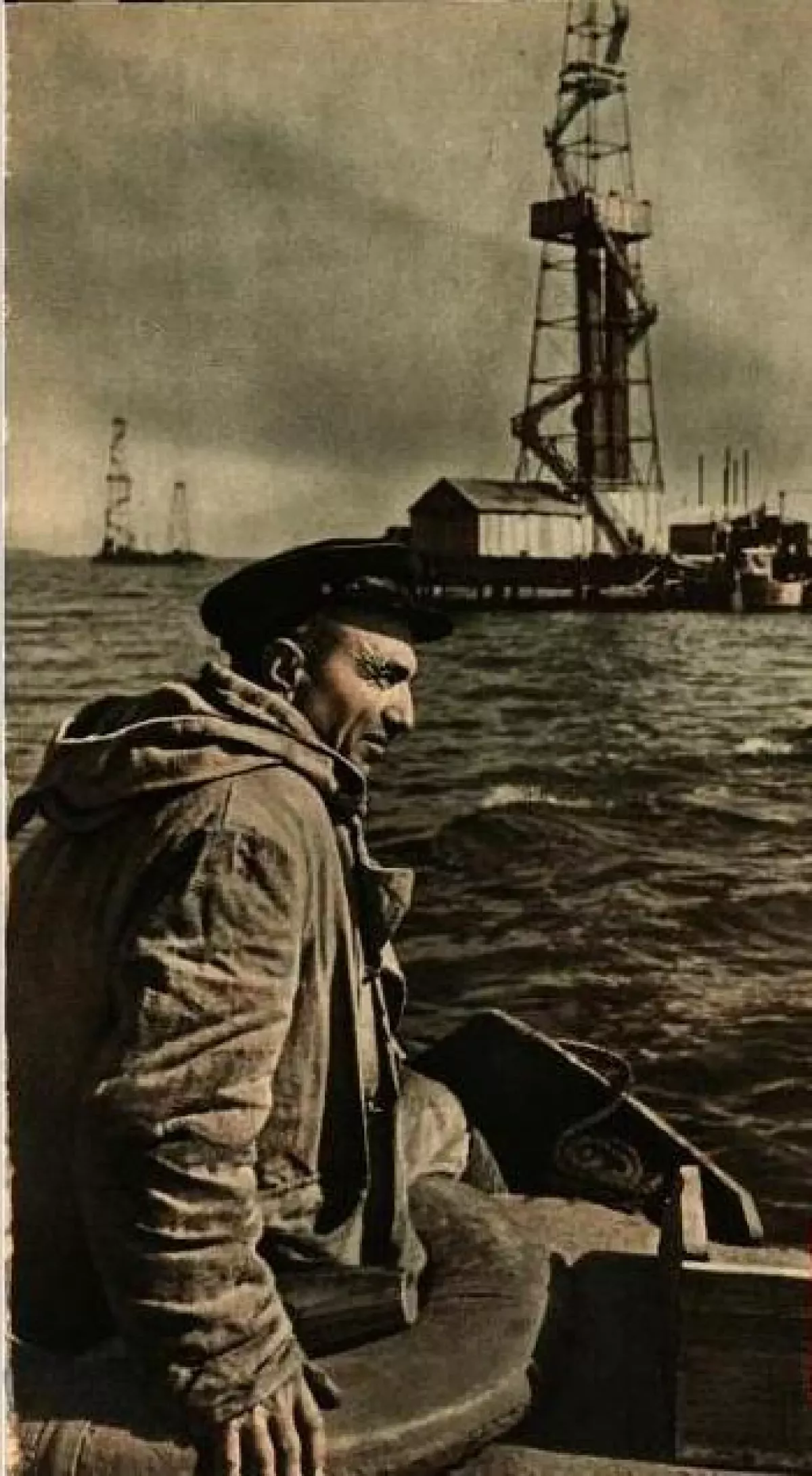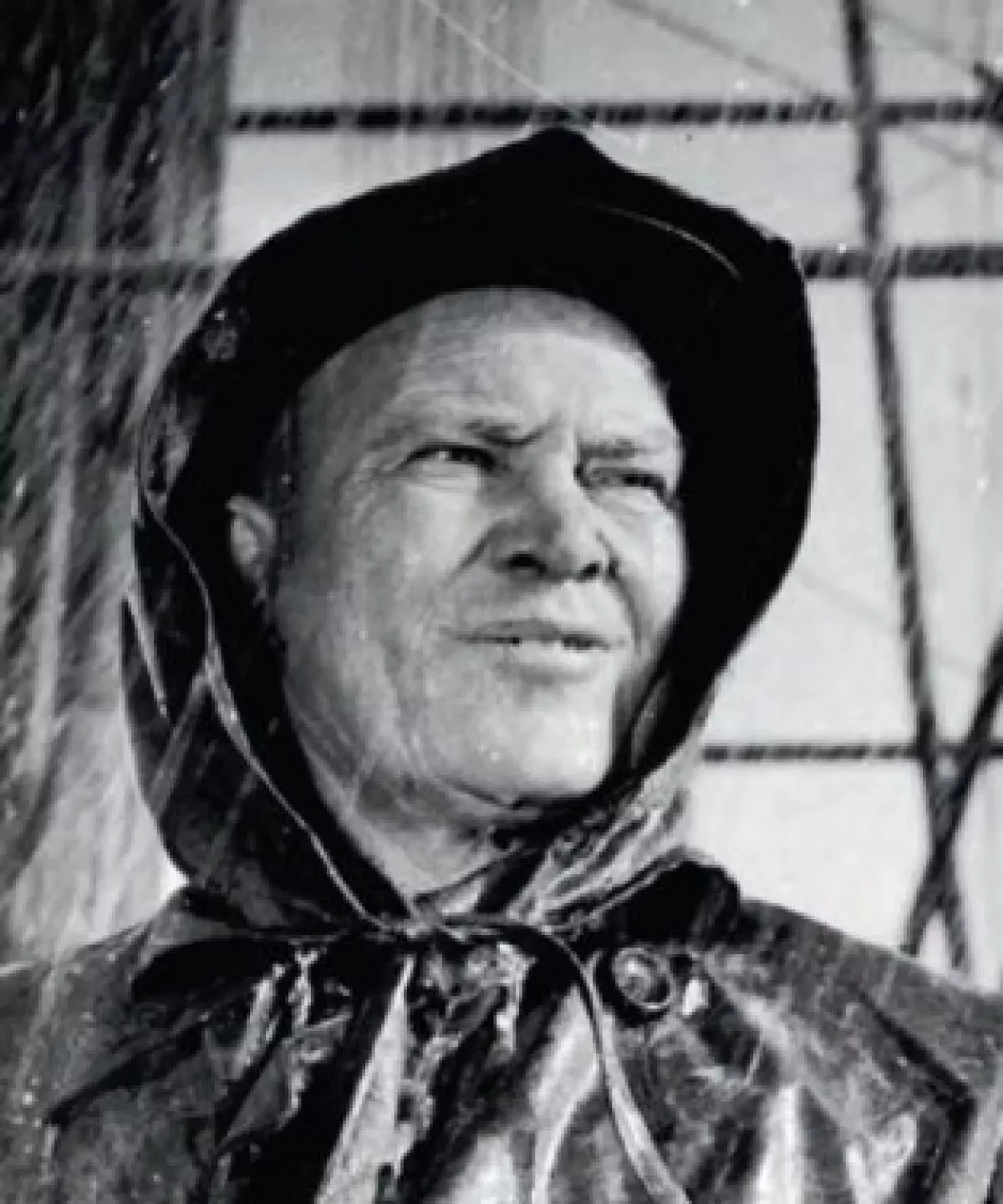Memory in names: Baku streets honouring heroes of oil glory. Part III A journey through history on Caliber.Az
The continuation. The beginning is in the first and second articles.
The names of prominent oil industry figures are immortalised in street names and monuments in Baku and other cities across Azerbaijan. These elements of the urban landscape serve as enduring reminders of the heroes whose dedication helped build the nation's energy strength. It is a profound tribute to their tireless work and invaluable contributions to Azerbaijan’s development.

Farman Salmanov is one of the most iconic figures in the history of the oil industry in both the Soviet Union and Azerbaijan. Widely regarded as the discoverer of Siberian oil, he is credited with reshaping the geological map of the country and breathing new life into the Soviet oil sector. Farman Salmanov was born in the Shamkir district of the Azerbaijan Soviet Socialist Republic in 1931.
In 1949, he enrolled in the Faculty of Geological Exploration at the Azerbaijan Industrial Institute (now the Azerbaijan State Oil and Industry University), where he chose to specialize as a mining engineer-geologist. For his thesis, Salmanov focused on the prospects of the Middle Ob oil-bearing region within the West Siberian oil and gas basin.
As a young researcher, he arrived at bold—and at the time, highly unconventional—conclusions about the presence of significant oil reserves in Western Siberia. After graduating from the institute, Salmanov was initially assigned to work in Baku, but he insisted on being transferred to Siberia. Between 1955 and 1957, he led the Plotnikovskaya and Gryaznenskaya oil and gas exploration expeditions in the Kuzbass region. In August 1957, Salmanov made a fateful decision—he defied orders and independently led a geological team to the Surgut region, firmly convinced that vast oil reserves lay hidden beneath its surface.
Despite facing prohibitions, threats of dismissal, and orders to halt drilling, Salmanov persisted with his work. Ultimately, the authorities were forced to retroactively approve the redeployment of his team to the area. Salmanov was proven right—he discovered oil! From 1962 to 1964, Salmanov served as the chief geologist of the Ust-Balykskaya expedition before taking charge of the Pravdinskaya expedition. Under his leadership, one of the first major oil fields—the Ust-Balykskoye field—was discovered in October 1963.
This breakthrough confirmed the vast potential of the Tyumen region for oil production. Over more than 30 years of work in Western Siberia, Salmanov played a key role in the discovery of over 130 oil and gas fields. Among these are the Mamontovskoye, Megionskoye, Surgutskoye, Fyodorovskoye, Urengoyskoye, Yamburgskoye fields, and others that continue serving as pillars of Russia’s fuel and energy sector.
From 1987 to 1991, Salmanov served in Moscow as the first deputy minister of geology of the Union of Soviet Socialist Republics (USSR) and was a people's deputy of both the Russian Soviet Federative Socialist Republic (RSFSR) and Azerbaijan. After the dissolution of the Soviet Union, he became president of the company Rospan International, later serving as an advisor to the oil and gas company Itera and chairman of the board of directors at Yugneftegaz.

Thanks to his intuition and expertise, new reservoirs at the Novo- and East-Urengoy fields were thoroughly explored and brought into production. Salmanov was not only an outstanding practitioner but also a respected scientist, having published over 160 scientific works, including 10 monographs. Among these are seminal studies that have become classics in geological science, focusing on the patterns of deposit formation, the geological structure of Siberia, and methods to accelerate hydrocarbon exploration.
In recognition of his exceptional achievements, Salmanov was honored with the highest state awards, including the title of Hero of Socialist Labor, the Orders of Lenin, the October Revolution, the Red Banner of Labor, the Friendship of Peoples, as well as the Order of Glory of the Republic of Azerbaijan. The legacy of Farman Salmanov has been commemorated in numerous cities and institutions across Russia and Azerbaijan. Since 2008, a youth scientific and practical conference in Tyumen has been named the "Salmanov Readings" in his honor, as well as Surgut’s Gymnasium # 3. Monuments and busts dedicated to him stand in Moscow, Baku, Surgut, Salekhard, and Khanty-Mansiysk, ensuring his contributions are remembered for generations to come.
His name has been given to streets in Surgut, Nizhnevartovsk, Pyt-Yakh, and Tyumen, as well as to an oil and gas condensate field and a passenger riverboat commissioned by the Yamal administration. Additionally, several aircraft bear his name, including a Tu-154M and a Boeing 737-800 from UTair Airlines, and an Airbus A321neo operated by Aeroflot. In 2018, it was announced that Surgut Airport would be named in honor of Farman Salmanov.
Since 2011, the World Boxing Cup for oil-producing countries, held annually in the Khanty-Mansi Autonomous District, has been dedicated to the memory of Hero of Socialist Labour Salmanov. On July 9, 2019, Azerbaijani President Ilham Aliyev signed a decree to honor the memory of Farman Salmanov. As part of this initiative, a named scholarship was established to support two students at the Azerbaijan State Oil and Industrial University.
In 2021, a monument to Farman Salmanov was unveiled, and a lecture hall named in his honor was established at the Russian State University for Geological Prospecting. Additionally, a street in Sumgayit now bears his name—a tribute to the remarkable man who discovered the oil-rich heart of Siberia. Salmanov will forever be remembered as the man who saw oil where few believed it existed.
His determination, expertise, and unwavering belief in his ideas made the impossible possible. He didn’t just discover oil in Siberia—he breathed life into an entire region and inspired generations of geologists to follow in his footsteps.

Gulbala Aliyev was a prominent figure in the history of Azerbaijan’s oil industry, whose life and career were closely tied to the formative and flourishing years of oil production on the Absheron Peninsula.
Born in 1879 in Bilgah, he began his career in the late 19th century at the Bibi-Heybat oil fields—the cradle of Baku’s oil boom. From a young age, he demonstrated remarkable diligence and perseverance, rising through the ranks from laborer to engineer. In 1922, he took part in large-scale efforts to drain the bay in the Bibi-Heybat area. In 1946, he played a key role in reviving oil production by restoring numerous wells and initiating a broad reconstruction of the industry. His contributions extended beyond technical achievements—he was also deeply involved in training and developing skilled professionals for the oil sector.
Thanks to his efforts, a generation of specialists emerged for whom hard work, dedication, and professionalism became guiding principles. His outstanding contributions were recognized with numerous high honors: he was named a Hero of Socialist Labor, a two-time recipient of the Order of Lenin, and was awarded the Orders of the October Revolution and the Red Banner of Labour. He also held distinguished titles such as "Veteran of the USSR Oil Industry," "Honored Oilman of the USSR," and "Master of Oil of the Azerbaijan Soviet Socialist Republic." In 1961, a documentary titled “Our Gulbala” was released, serving as a cinematic tribute to both the man and his era.
Today, a street in Baku’s Nasimi District bears his name—a lasting symbol of respect for a man who devoted his life to the advancement and prosperity of the oil industry.

The name of another prominent oilman, Aga Neymetulla, lives on through a street in Baku’s Narimanov District and a vessel operated by the Caspian Sea Shipping Company. Born in 1896 in the small town of Serab near Tabriz, he moved to Baku in 1913 and began working in the oil industry.
By 1932, he had become a high-speed drilling master, and later rose to the positions of drilling office director and head of a major oil trust. In 1933, the newspaper Vyshka dubbed him the “Izotov drilling”—a reference to one of the Soviet Union’s most celebrated workers. In 1941, in the Bibi-Heybat settlement, he became the first in the world to drill a slant-directional well using a turbodrill. This groundbreaking achievement paved the way for accessing previously unreachable oil reserves beneath the Caspian Sea.
During World War II, he supported oil workers in Uzbekistan, and afterward, he continued advancing drilling technologies in Azerbaijan. In 1946–1947, together with a team of engineers, he carried out the first offshore directional drilling operation in the history of Azneft.
He also pioneered the use of cluster drilling for dual-bore wells from a single platform—an innovation that significantly accelerated drilling operations. He shared his expertise in a 1947 publication titled “Deeper into the Earth”.

One of Baku’s streets is also named in honor of Mikhail Pavlovich Kaverochkin. His name is commemorated with a monument at Oil Rocks—the site where he drilled the first offshore well. This monument stands as a symbol of recognition for his pioneering achievements and immense contribution to the development of offshore oil production.
He was born in 1904 in Maraza (now Gobustan) and began working at the age of 16. From 1923, he was employed in the oil industry, starting at a machine-building plant before moving into drilling. In 1947, he joined the marine drilling trust, marking the beginning of his significant contributions to offshore oil exploration.
He was entrusted with the task of drilling the first offshore well at the Oil Rocks settlement. In November 1948, the well produced a powerful oil gusher—a world record for deepwater wells at the time. Kaverochkin drilled over 130 wells throughout his career, more than 20 of which were at Oil Rocks. His life was tragically cut short on November 21, 1957, during a powerful storm on the Caspian Sea that claimed the lives of the entire drilling crew.
This tragedy remains forever etched in memory as a symbol of courage, dedication to the profession, and the selflessness of those who devoted themselves to harnessing the offshore oil wealth. Today, many streets in Baku bear the names of individuals whose tireless efforts laid the foundation of Azerbaijan’s oil industry. Every day, we walk these streets, often unaware of the stories and heroic deeds behind the names they carry.
Vahid Shukurov, specially for Caliber.Az








